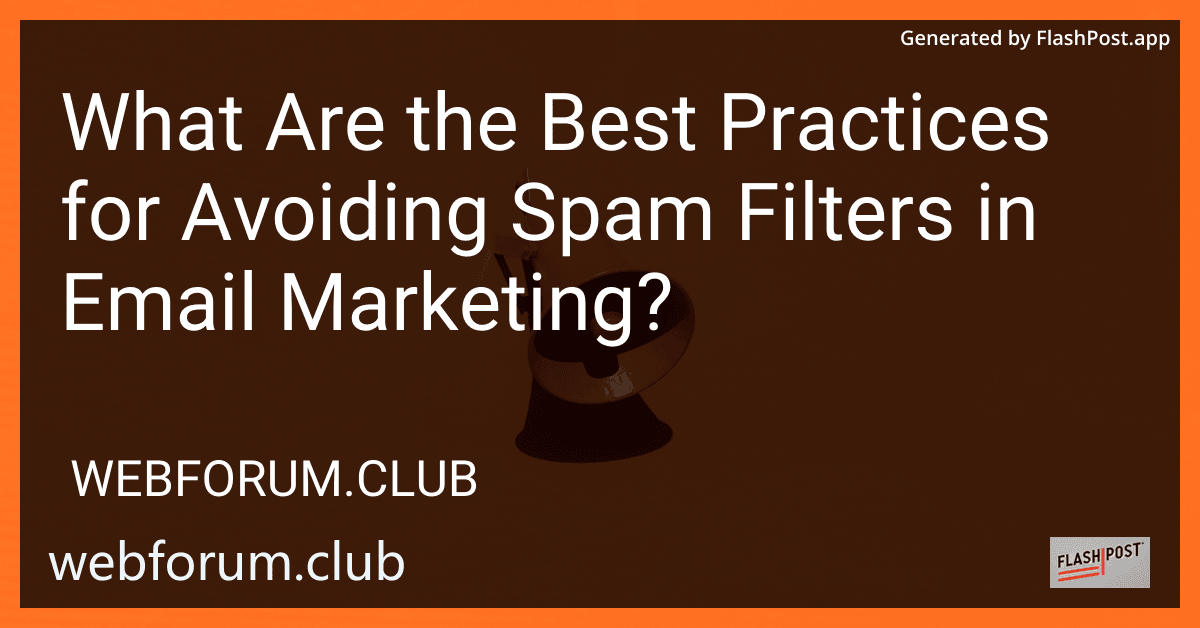Email marketing remains a powerful tool for businesses looking to engage with their audience. However, sending an email that lands straight into the spam folder is one of the most common challenges marketers face. To ensure your emails reach their intended recipients, it’s crucial to follow the best practices for avoiding spam filters. Here’s how you can maximize your email deliverability and enhance your marketing campaigns.
1. Build a Quality Email List
Avoid purchasing email lists. Recipients who have not opted in to your newsletter or promotional messages are more likely to mark your emails as spam. Instead, organically grow your list by encouraging sign-ups through your website and social media channels.
2. Use a Reliable Sender Name and Email Address
The sender name and email address are the first things recipients see. Use a recognizable and consistent sender name combined with a professional email address. This builds trust and increases the likelihood that your emails will be opened.
3. Craft a Compelling Subject Line
A subject line is your first chance to grab attention, so make it count. Avoid using all caps, excessive punctuation like exclamation marks, or spam trigger words such as “buy now” or “free offer.” Instead, aim for a subject line that is clear, concise, and reflective of the email’s content.
4. Maintain a Healthy Text-to-Image Ratio
Emails with a ton of images and little to no text are often classified as spam. A good rule of thumb is to maintain a minimum of 60% text to 40% images. Always include alt text for images, which serves as a backup when images do not load and provides context for what the image represents.
5. Authenticate Your Email
Use authentication protocols such as SPF, DKIM, and DMARC. These protocols validate your emails and signal to ISPs and email clients that your emails are coming from a verified source, reducing the likelihood of your emails being marked as spam.
6. Optimize for Mobile Devices
Ensure your emails are mobile-friendly. A significant percentage of email opens occur on mobile devices. If an email doesn’t display properly on a smartphone or tablet, it may end up being deleted or marked as spam.
7. Monitor Engagement Metrics
Track metrics like open rates, click-through rates, and bounce rates. High bounce rates and low engagement can be indicators that your emails are being caught in spam filters. Regularly analyze these metrics and adjust your strategies accordingly.
8. Test Emails Before Sending
Before dispatching your mailing list, test how your email will appear in various email clients and devices. You can use tools and services that preview your emails across multiple platforms to ensure your message is consistent and professional.
9. Comply with Legal Requirements
Familiarize yourself with regulations like the CAN-SPAM Act and GDPR. Clearly provide an unsubscribe link in every email and honor opt-out requests promptly. Non-compliance can lead to penalties and damage your brand’s reputation.
Conclusion
By following these best practices for avoiding spam filters, you can significantly increase the chances that your email marketing campaigns will reach the inboxes of your desired audience. Always prioritize authenticity and value, ensuring that your recipients look forward to your communications.
Looking to send multiple emails efficiently with Laravel? Check out these resources:- Laravel Email Sending Guide- How to Send an Email in Laravel- Email with Laravel
Want to know more about sending emails via localhost or using SMTP in PHP?- Sending SMTP Mail from Localhost- Email Sending in PHP with SMTP“`
